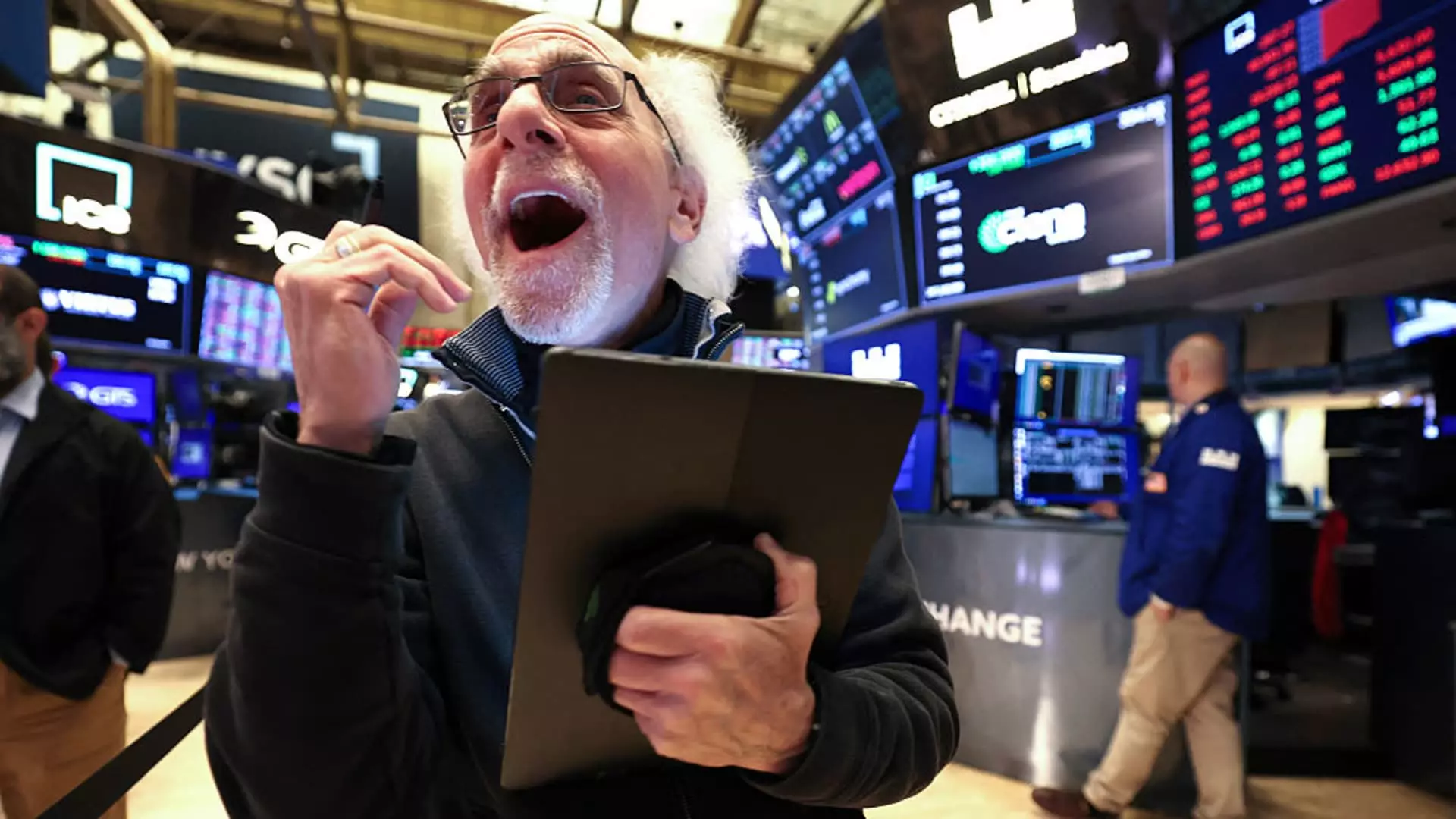The U.S. stock market has been on a remarkable tear recently, reaching new all-time highs across key indices like the S&P 500 and Nasdaq Composite. Far from a simple rebound, this surge reflects deeper investor confidence that the American economy and corporate sector possess an underlying strength capable of overcoming multiple persistent risks. While pundits often fret over tariffs, geopolitical tensions, and Federal Reserve policies, the market’s robust ascent tells a story of selective optimism—one that embraces innovation, defense, and steady economic fundamentals.
As of last week, the S&P 500 soared past 6,180 points, marking an impressive 24% gain from its April lows despite the turbulence caused by President Trump’s tariff announcements in early April. These reciprocal tariffs initially spooked investors who feared they would trigger a trade war capable of derailing growth. Yet the market’s defiant rally implies that investors are choosing to look past short-term headline risks in favor of longer-term growth trends, especially in sectors driven by cutting-edge technology and defensive business models.
Artificial Intelligence: The Unstoppable Economic Engine
What stands out most strikingly in this bull phase is the revival of the generative artificial intelligence (AI) trade. Earlier fears of a slowdown in AI investments, fueled by U.S.-China trade tensions and export restrictions, have given way to a renewed enthusiasm fueled by tangible corporate results and strategic deals. Nvidia, the chipmaker synonymous with AI advancement, led the charge, surging past a record $158 per share and spurring a staggering $3.8 trillion market valuation. This is no flash in the pan—Nvidia’s explosive earnings and a landmark deal to supply AI chips to Saudi Arabia indicate that demand for AI hardware is only ramping up.
Broader industry players are following suit. Broadcom’s record highs are a direct consequence of escalating AI chip demand, while Microsoft’s cloud computing juggernaut, Azure, benefits as the infrastructure backbone for AI applications worldwide. Even industrial firms like GE Vernova have found themselves thrust into the AI boom by supplying turbines essential for powering data centers. The impressive 61% year-to-date gain for GE Vernova compared to only 5% for the S&P 500 signals that investors who bet on the AI infrastructure theme are seeing disproportionate rewards.
Defensive Investments Gain Clarity as Global Conflicts Simmer
Another unmistakable trend is the gravitation towards defense and cybersecurity stocks. The ongoing instability in the Middle East and escalating cyberwarfare threats have sharpened focus on companies that offer security solutions. CrowdStrike, a leader in cybersecurity, recently hit record highs, validating the sector’s status as a fortress amid geopolitical uncertainties. Its peer, Palo Alto Networks, while not at an all-time peak, remains close to historic highs—underscoring investor demand for firms positioned as protectors of digital frontiers.
This flight to defensive themes highlights a pragmatic streak in markets: investors are not blindly chasing growth but balancing speculation with a sensible hedge. In an era where cyber threats can disrupt both corporations and governments, companies that provide digital armor are proving to be among the most resilient investment stories.
Economic Resilience Fuels Confidence in Corporate America
While trade policy and global conflicts dominate headlines, the underlying health of the U.S. economy remains a pivotal factor driving market enthusiasm. Federal Reserve Chair Jerome Powell’s recent comments that the economy is “still solid” and that the Fed is in no rush to cut interest rates gave traders confidence that inflation might be manageable without sacrificing growth. Such a backdrop is fertile ground for financial institutions and dealmakers alike.
Goldman Sachs exemplifies this dynamic. As companies rush to go public, Goldman’s position as a premier investment bank is increasingly valuable. Its leadership roles in recent high-profile IPOs such as Chime and eToro have fueled its shares to a nearly $700 record high. Meanwhile, financial services giant Capital One benefits from a stable consumer environment and has gained investor favor following its strategic $35 billion acquisition of Discover. Its share price reaching new highs reflects a broader market belief in the consumer’s resilience and the potential for continued spending in an economy that refuses to falter.
Investor Behavior Reflects a Blend of Caution and Boldness
A subtle but telling aspect of this market rally is the blend of aggressive growth bets with careful defensive positioning. Investors are not throwing caution to the wind but instead are navigating a fractured global environment with a calibrated approach. They embrace the transformational promise of AI and cloud computing, while also seeking refuge in cybersecurity firms and steady financial powerhouses. This balanced mindset points to a more sophisticated, center-right investor thesis: growth tempered by pragmatism, opportunity bounded by risk awareness.
Despite the spectacular recovery, the market is not free from vulnerabilities. Trade policies remain murky, geopolitical conflicts could flare unpredictably, and interest rate trajectories are far from certain. Yet this very point underscores the stock market’s remarkable adaptability. Rather than falling victim to headline paralysis, investors are positioning themselves in companies with strong competitive moats and future-proof business models.
A Tug of War Between Fear and Optimism
The ongoing narrative is one of pressure testing: the stock market is being continuously challenged by external shocks, but it refuses to break. This resilience champions the argument that America’s economic and technological base holds enduring value. Investors, particularly those with a moderate risk appetite and a forward-looking mindset, are making a powerful statement: disruptive innovation and defensive strength are not mutually exclusive, but complementary forces that can propel the market forward amid uncertainty.
In this light, the recent trading session was more than a mere technical milestone—it was a reaffirmation of confidence in capitalism’s ability to adapt and thrive. The specific winners, from Nvidia to CrowdStrike to Goldman Sachs, embody a new form of economic leadership, one rooted in innovation, strategic security, and financial agility rather than mere cyclical momentum.
Such depth and diversity in market leadership strengthen the belief that even in an era of global tension and economic policy ambiguity, American enterprise and investor resolve remain formidable engines of prosperity.

